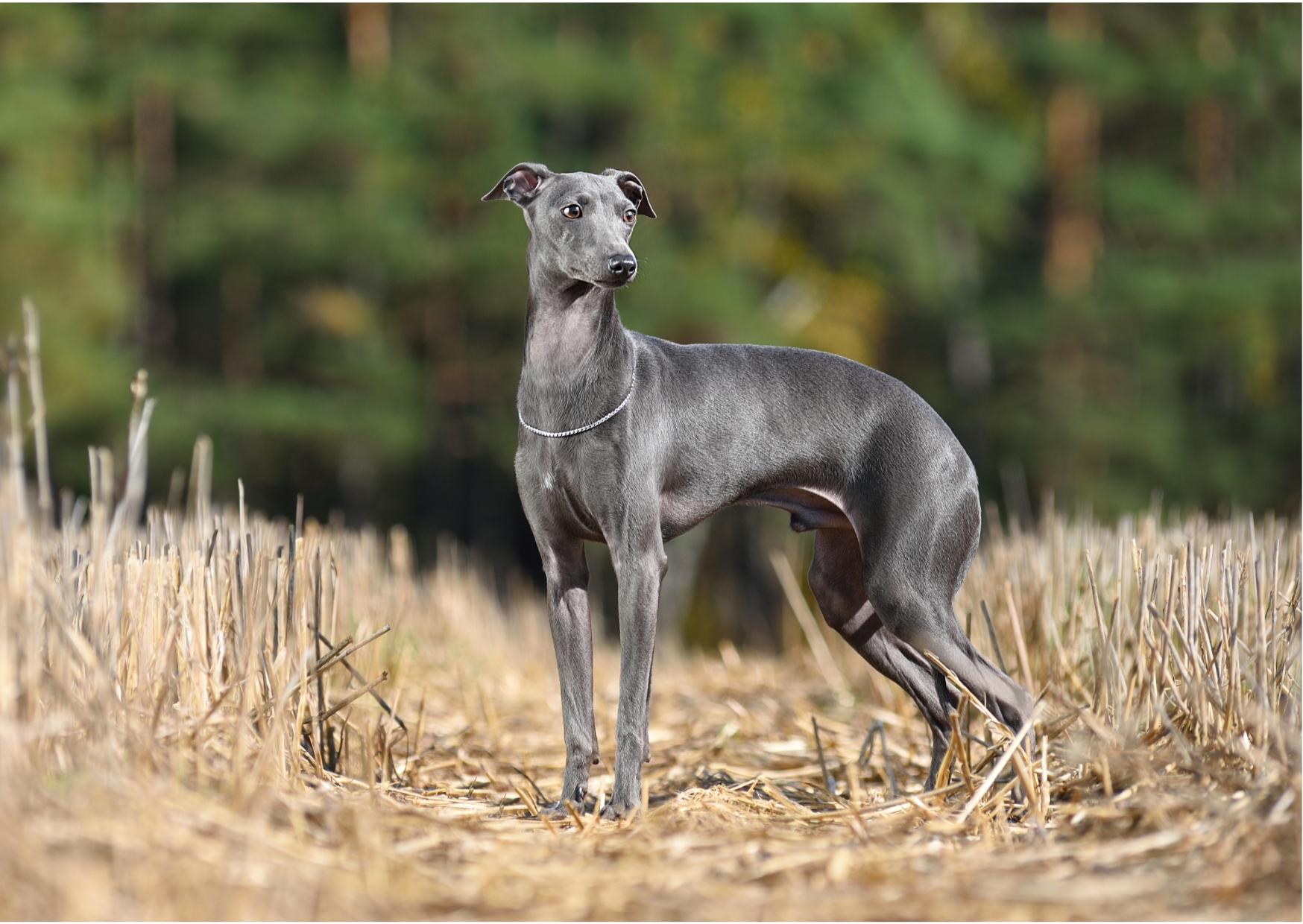GREYHOUND
| Group: | Hound |
|---|---|
| Size: | Large |
| Temperament: | Independent, kind, and genuine |
| Height: | 28-30 inches (male), 27-28 inches (female) |
| Weight: | 30-39 Kg (male), 23-31 Kg (female) |
| Life Expectancy: | 11-12 years |
| Origin: | UK |
| Coat Length: | Short |
| Coat Type: | Smooth |
| Color: | Black Blue Fawn Blue Blue Brindle Red Red Brindle White White & Black White & Red Black Brindle White & Blue White & Black Brindle White & Blue Brindle White & Blue Fawn White & Red Brindle |
About
The fastest of all dogs, greyhounds are however docile and gentle at home. The sleek and powerful Greyhound is designed specifically for running, with short bursts of speed up to 70 kph. Despite being bred to hunt hare, these dogs are now raced for entertainment. The Greyhound is a pet that only requires a little light exercise each day and enjoys spending the rest of the time at home relaxing.
Nutrition
Given their size, a greyhound's diet should be rich in calories and proteins. A bad diet can hinder bone growth and a greyhound's ability to recover from injuries. For energy intake, greyhounds need to consume carbohydrates, protein, and fat in their diet. Make sure your greyhound is also receiving some dry food and vegetables, as they require fibre for effective digestion.If you have any worries about your dog's weight or diet, consult your veterinarian.
Ideal Meal Breakdown
Protein
33
Fat
16
Carbohydrates
43
Others
8
Exercise
The cheetah of the canine world is the greyhound. He is content to lounge around the house all day, but when presented with a chance to chase a tennis ball or a coursing lure, he is capable of incredible speed and energy. Greyhounds require a consistent exercise routine and opportunities to run at full speed (safely). As they might not be able to control their urge to run off in search of perceived prey, they should only be permitted to run loose in securely fenced areas.
Grooming
Beyond routine baths and weekly rubdowns with a damp cloth or hound glove, the smooth, short coat of the Greyhound requires little maintenance. If not naturally worn down, his strong, quick-growing nails should be regularly clipped because excessively long nails can hurt the dog. A buildup of wax or other debris that could cause an infection should be checked for at least once a week, and the ears should be cleaned as necessary. If at all possible, brush the teeth twice a day with toothpaste made specifically for dogs.
Training
Anyone who is unfamiliar with the genetic roots of the Greyhound temperament may find training a Greyhound to be frustrating. The Greyhound was created as a sighthound, or coursing breed, to pursue game by sight rather than by scent. From an early age, a greyhound should be socialised with kids and small animals. Due to the Greyhound's propensity for getting bored easily, keep training sessions brief and simple. Due to his mild and sensitive nature, he requires gentle training methods that are never harsh. Although they tend to be reserved around strangers, they are very affectionate with their family members.
Health
In general, greyhounds are in excellent health, but there are a few diseases to which the breed is predisposed. The Greyhound, like the majority of deep-chested breeds, is prone to bloat and gastric torsion, a sudden and potentially fatal expansion of the stomach that is occasionally accompanied by twisting. Owners should be aware of bloat symptoms and seek medical help right away if they appear. Greyhound neuropathy appears to be a rare condition in the breed. Heart and eye disorders are some of the additional disorders that can exist. Breeders who are responsible check their animals for ailments that could harm the breed.
History
Although the modern Greyhound originated in the UK, its earliest ancestors may have been the canines with a similar appearance that were depicted in Egyptian tombs dating back to around 4,000 BCE.Dog-like creatures and hunters are depicted in prehistoric art, but the Greyhound legend actually starts in Egypt around 5,000 years ago. The hounds of the pharaohs were created to track down, pursue, seize, and kill the nimble desert wildlife of Egypt. These haughty hounds' divine beauty served as an extension of the pharaoh's majesty to his subjects. From Alexander the Great's Macedonia to the Tsars' Moscow, nobles have always appeared a little more dignified when they are accompanied by an elegant hound. Greyhound racing rose to popularity in the 20th century as a kind of entertainment, but it has since fallen out of favour because of worries about animal welfare. Greyhounds are now cherished pets renowned for their sweet disposition and agility.
